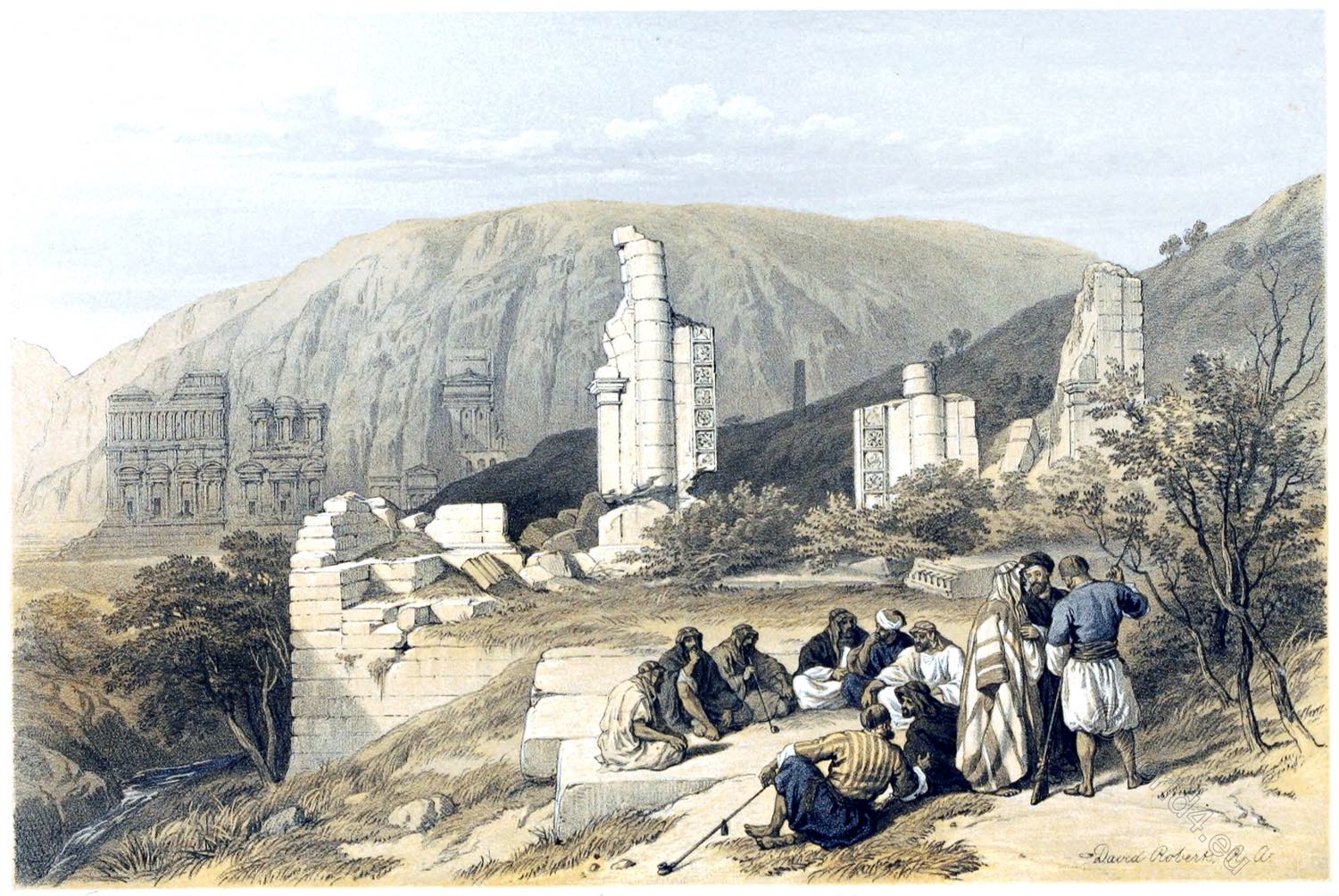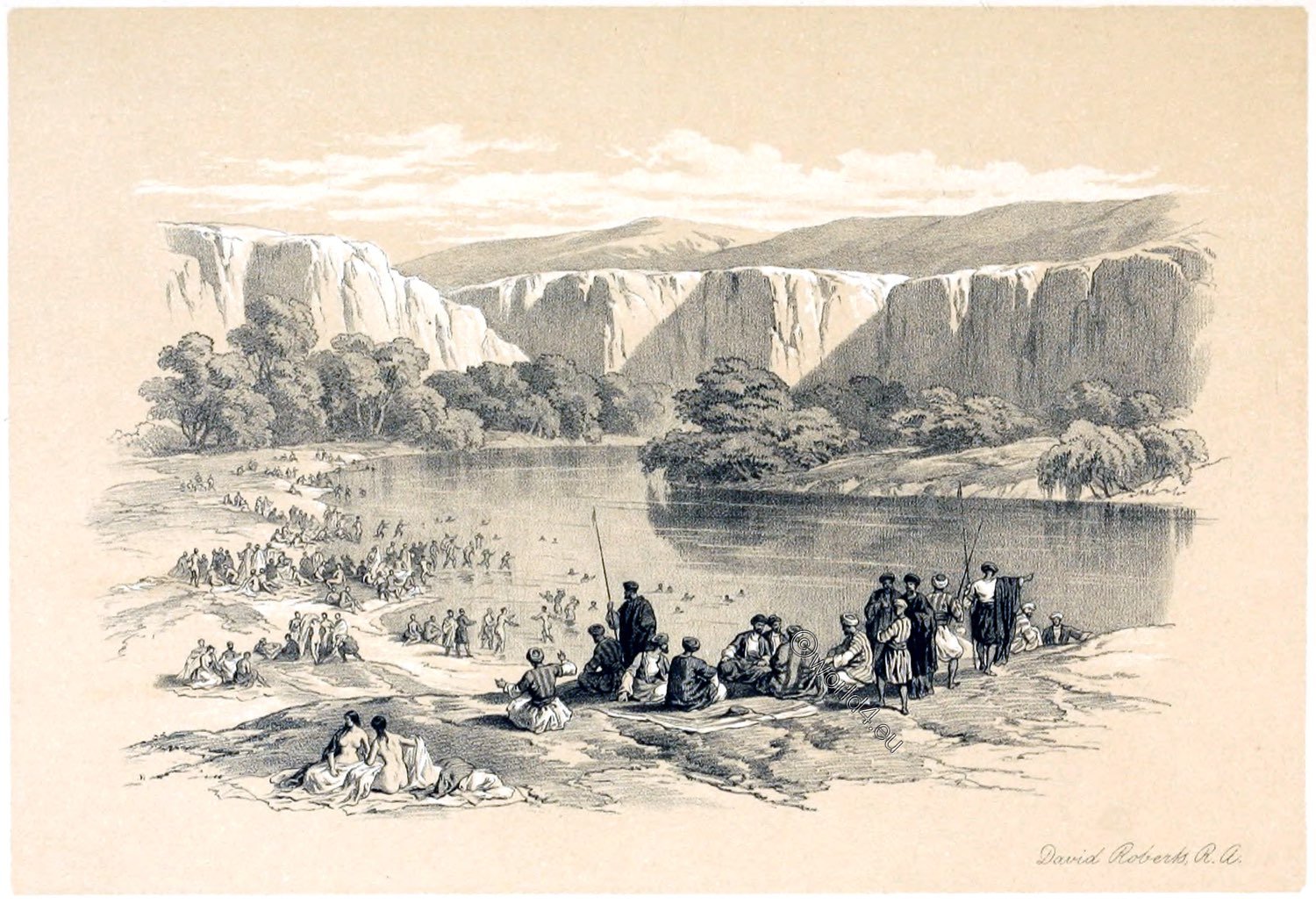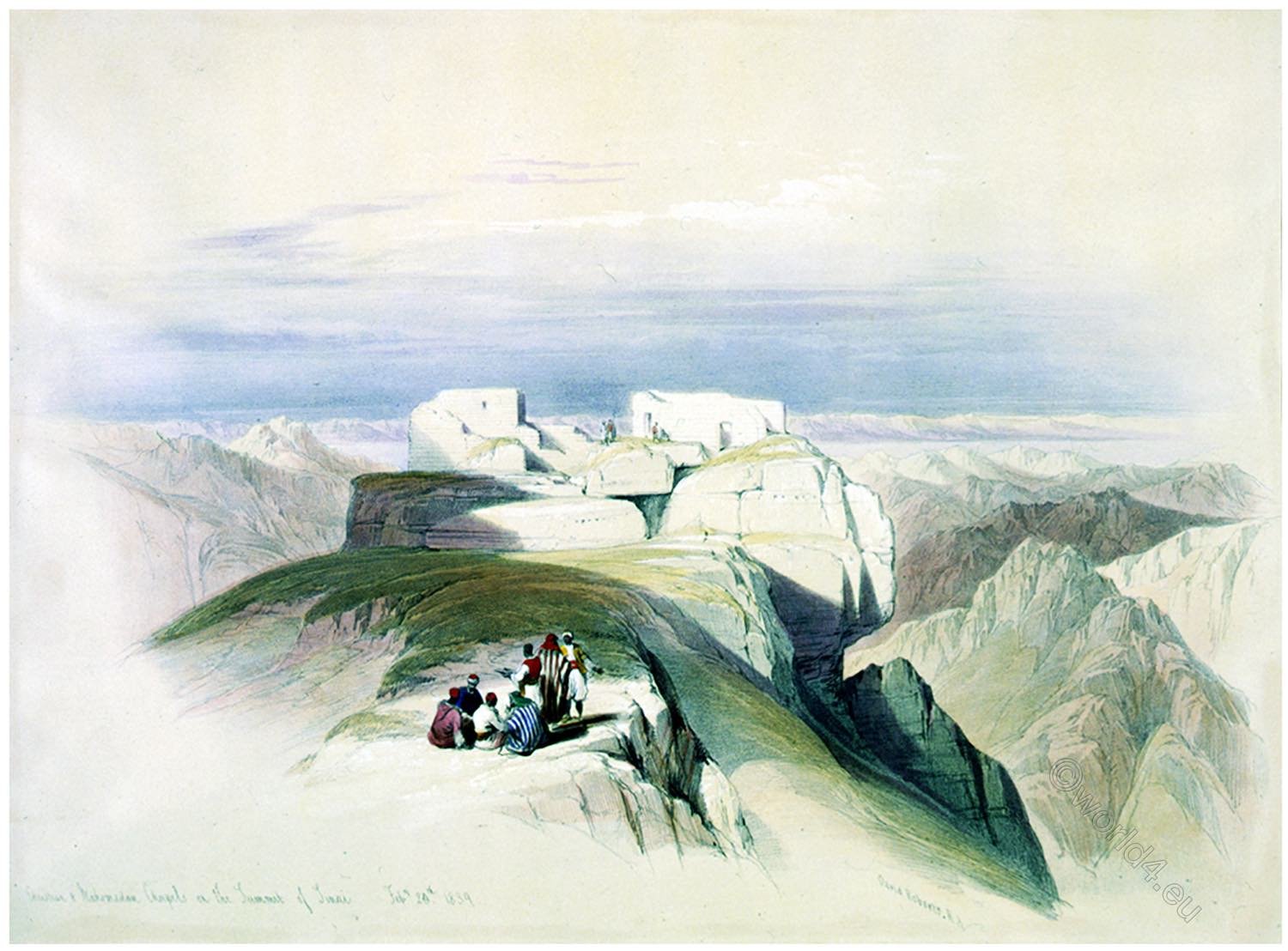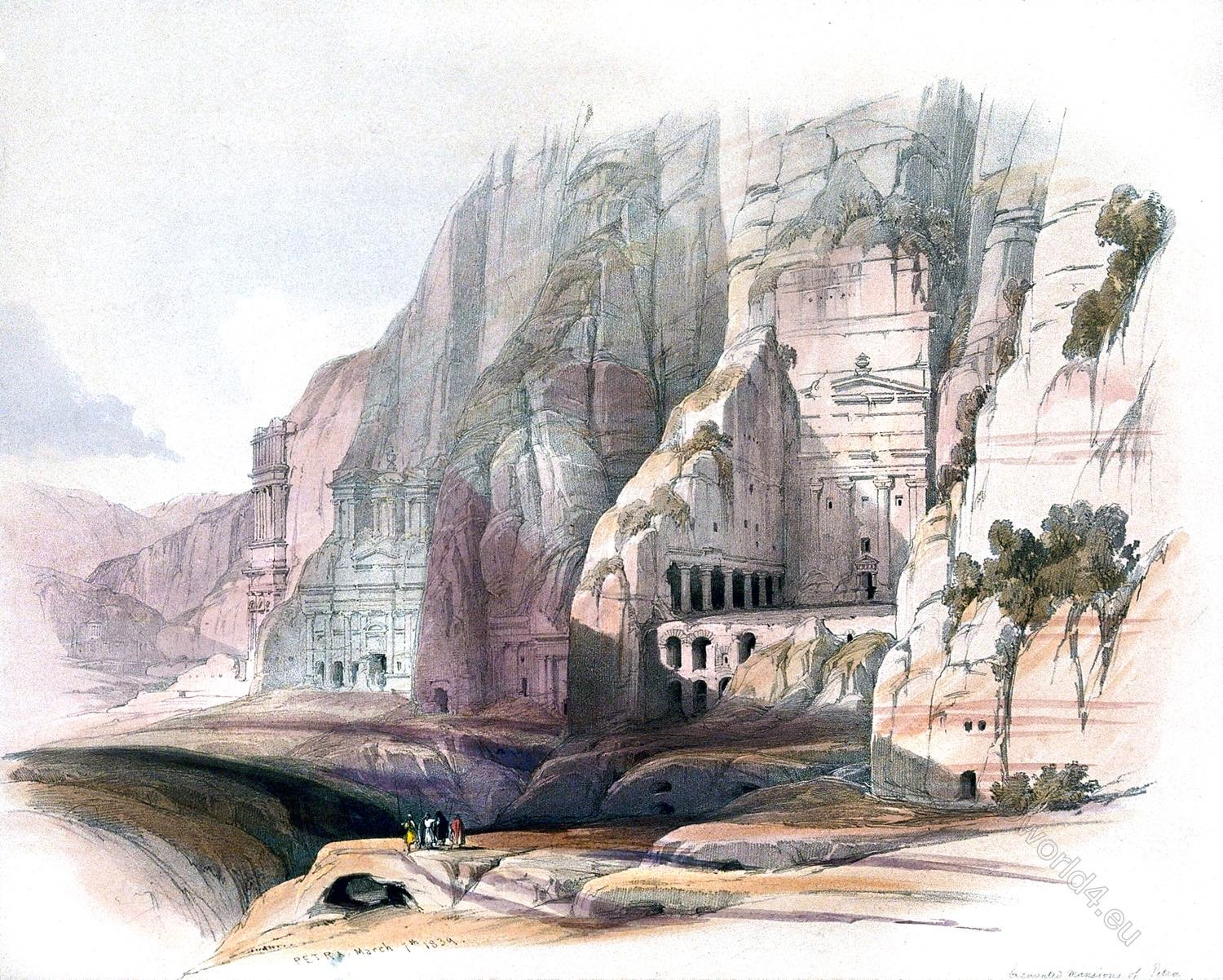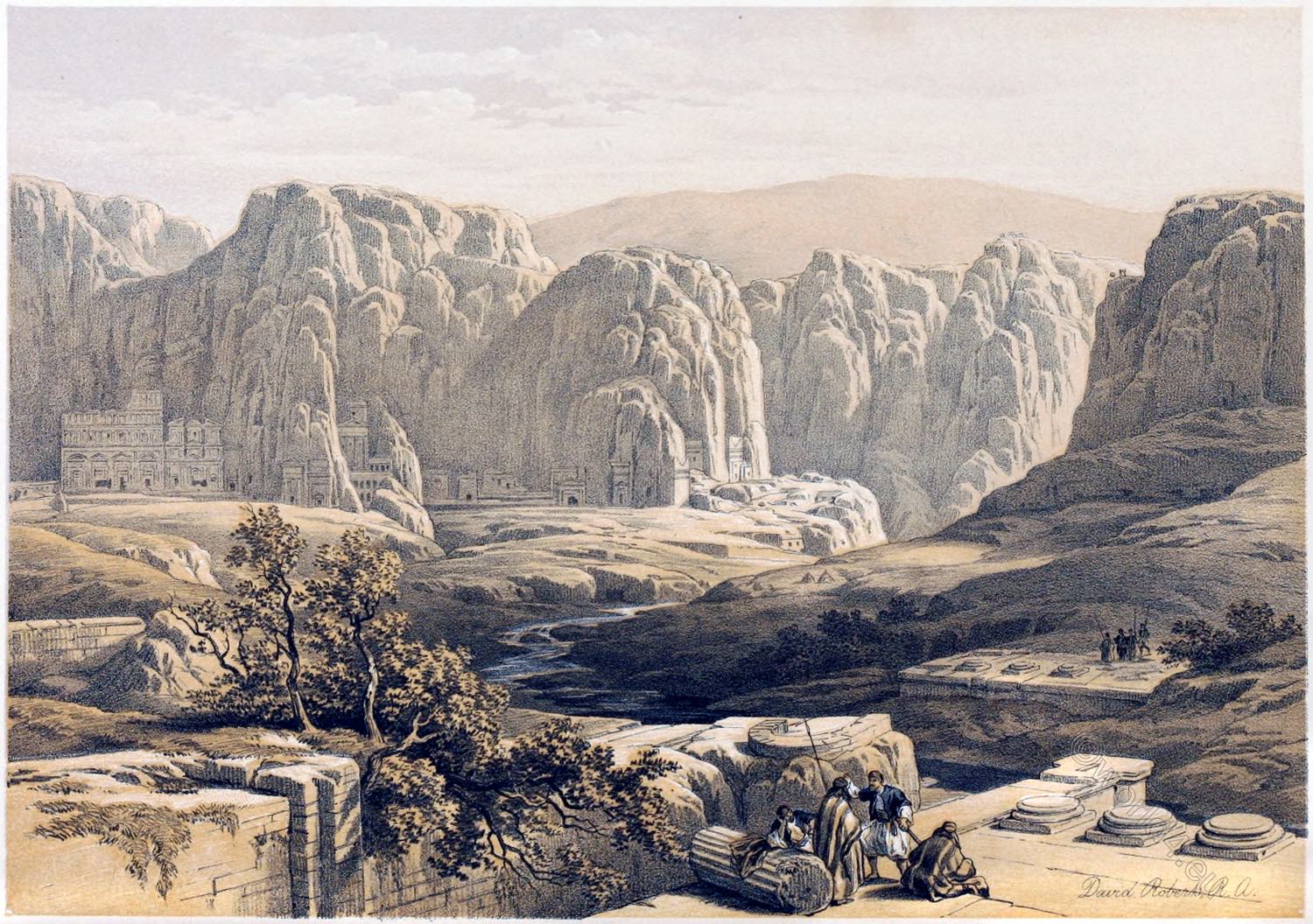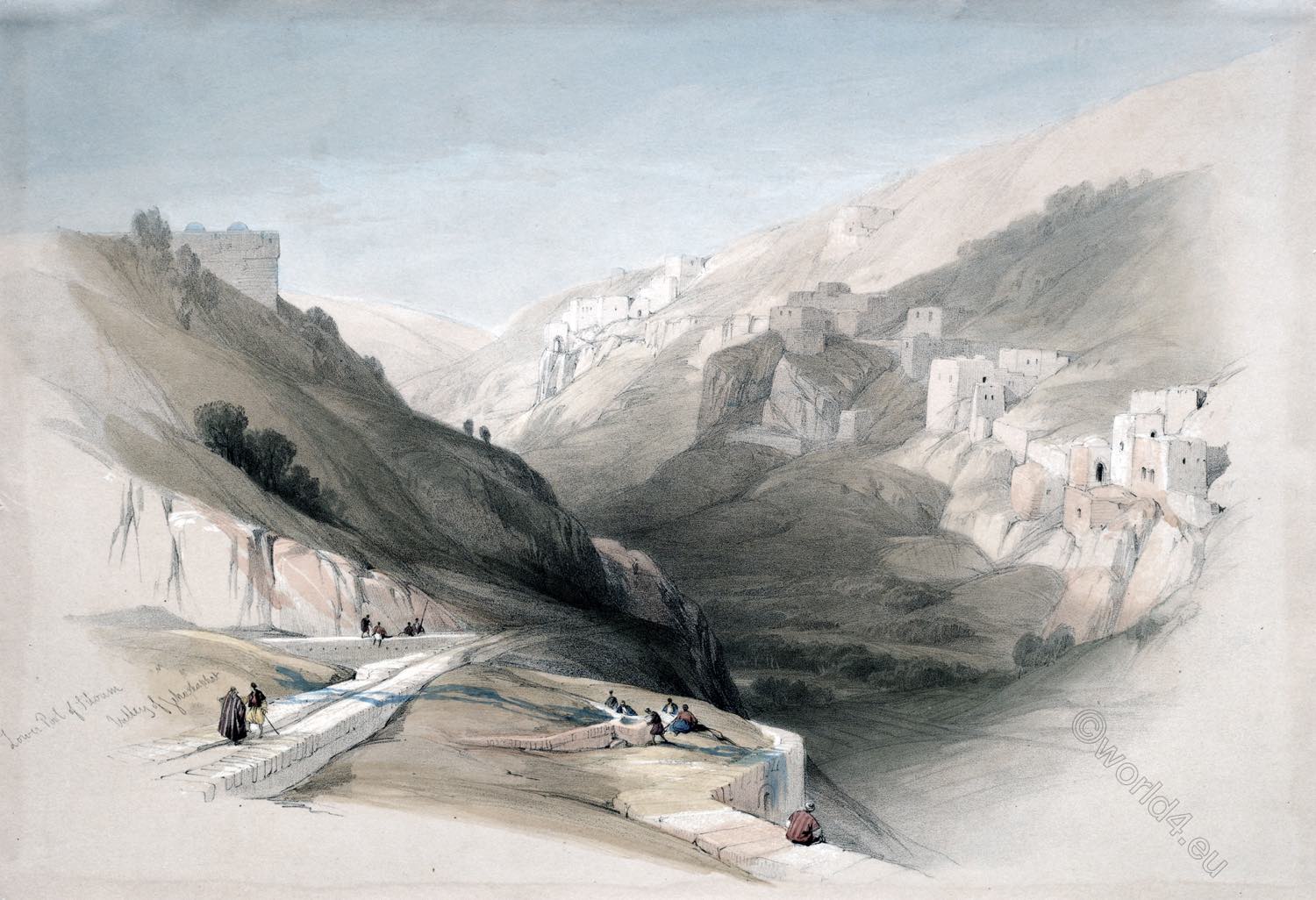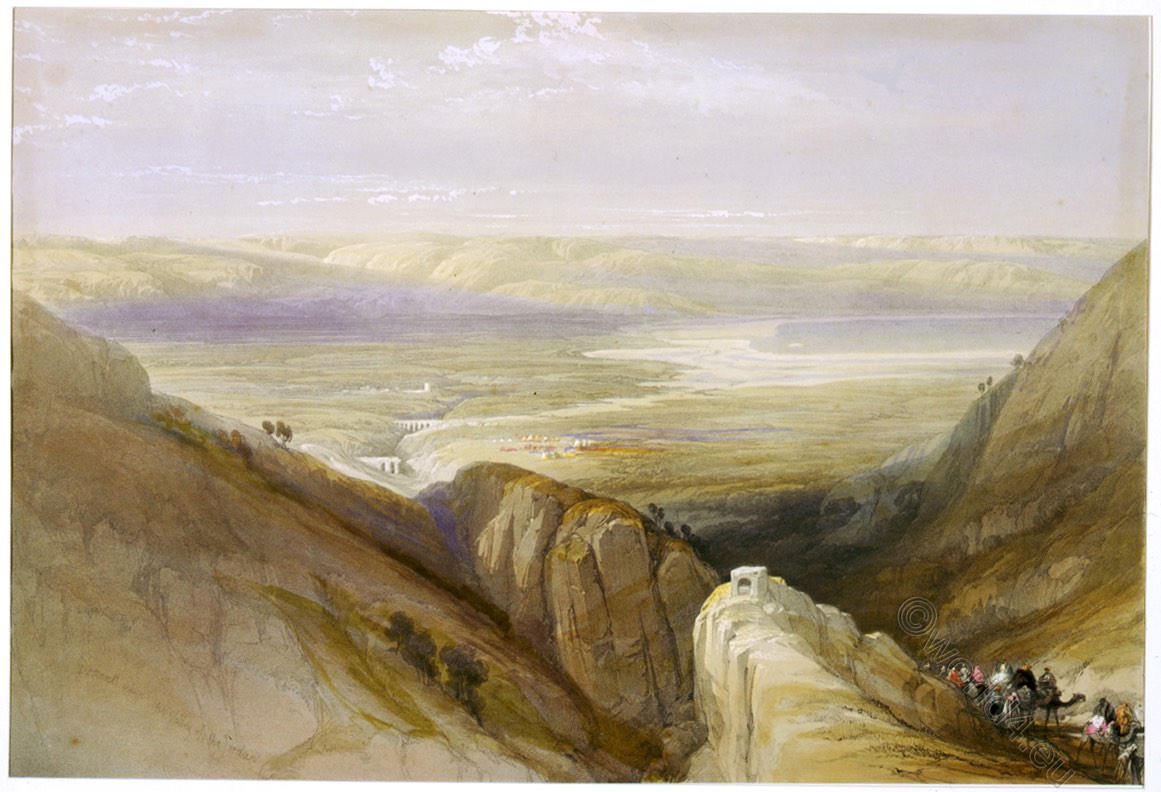
DESCENT TO THE VALLEY OF THE JORDAN
by David Roberts.
The View is taken from the highway leading from Jerusalem through Jericho, and forming a part of the road, or system of roads, by which Jerusalem was connected with the countries on the Euphrates, and thence with Persia and India.
The pass is singularly difficult, and still inherits its evil name as a place of robbers. In this scene of the Parable of the Good Samaritan, no stranger ventures without an escort, But its variety and boldness strongly attract the eye.
“The view,” says the Artist, “when we emerged from the rocky hills, was one not to be forgotten. The Valley of the Jordan lay stretched beneath our feet; all the beauty of an Eastern evening.
The Dead Sea, the silvery line of the rapid Jordan just visible, the gay colours of the pilgrim encampment glittering in the last rays of the setting sun, were fitter for the poet than the painter. The pencil must fail to realise it. On the whole line of road were Arab and Bedouin lancers.” 1)
Lamartine describes the journey, beginning from Bethany, as singularly toilsome and melancholy. Neither houses nor cultivation, mountains without a shrub, immense rocks split by time, and pinnacles tinged with colours like those of an extinguished volcano.
“From the summit of these hills, as far as the eye can reach, we see only black chains, conical or broken peaks, a boundless labyrinth of passes rent through the mountains, and those ravines lying in perfect and perpetual stillness, without a stream, without a wild animal, without even a flower; the relics of a convulsed land, with waves of stone.” He had still another ridge to cross, and on passing it the escort fired then muskets in token of joy. 2)
A large portion of the Valley of the Jordan has been from the earnest time almost a desert. 3) But in the northern part of the Ghor, the great number of rivulets which descend from the mountains on both sides produce in many places a luxuriant growth of wild herbage. 4)
So, too, in the southern part, where similar rivulets exist, as around Jericho, there is even an exuberant fertility; but those rivulets seldom reach the Jordan, and have no effect on the middle of the Ghor. The mountains on each side are rugged and desolate; the western cliffs overhanging the Valley at an elevation of 1000 or 1200 feet, while the eastern mountains fall back in ranges of from 2000 to 2500.
But the Valley of the Jordan, wild as it is, comes honoured and hallowed to the heart by events of the noblest historical and religious memory. As the great barrier to Palestine, here was the miraculous passage of the Israelites, and the wondrous baptism of Israel. On this scene, too, was that second similar purification of the people consummated in the presence of “Him whom the heaven and the heaven of heavens cannot contain,” when He came to be baptised in the waters of the River, when the Holy Spirit visibly descended upon Him, and the voice of the Eternal Majesty proclaimed to the multitude, and to mankind, This is my beloved Son, in whom I AM WELL PLEASED. 5)
1) Roberts’s Journal. 2) Travels in the East. 3) Josephus, B. J. vii. 10. 4) Jerom. Com. in Zech. xi. 9. 5) Matt. iii. 17.
Source: The Holy Land, Syria, Idumea, Arabia, Egypt, & Nubia, by David Roberts, George Croly, William Brockedon. London: Lithographed, printed and published by Day & Son, lithographers to the Queen. Cate Street, Lincoln’s Inn Fields, 1855.
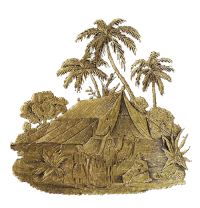
Continuing
Discover more from World4 Costume Culture History
Subscribe to get the latest posts sent to your email.

